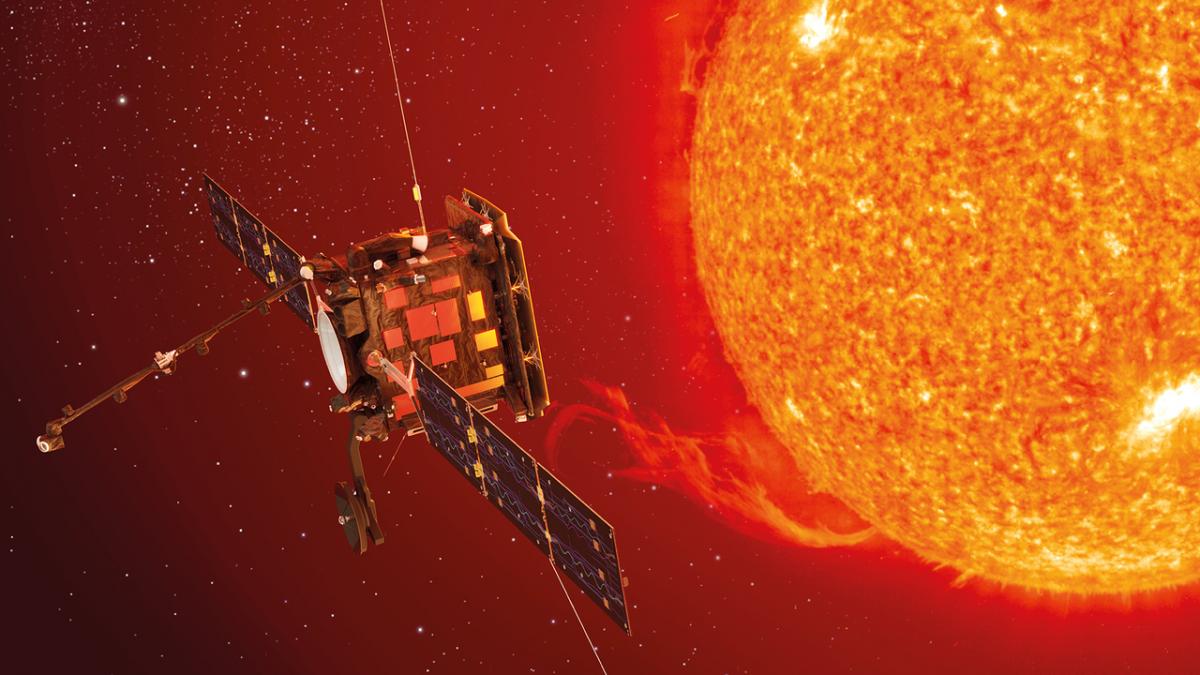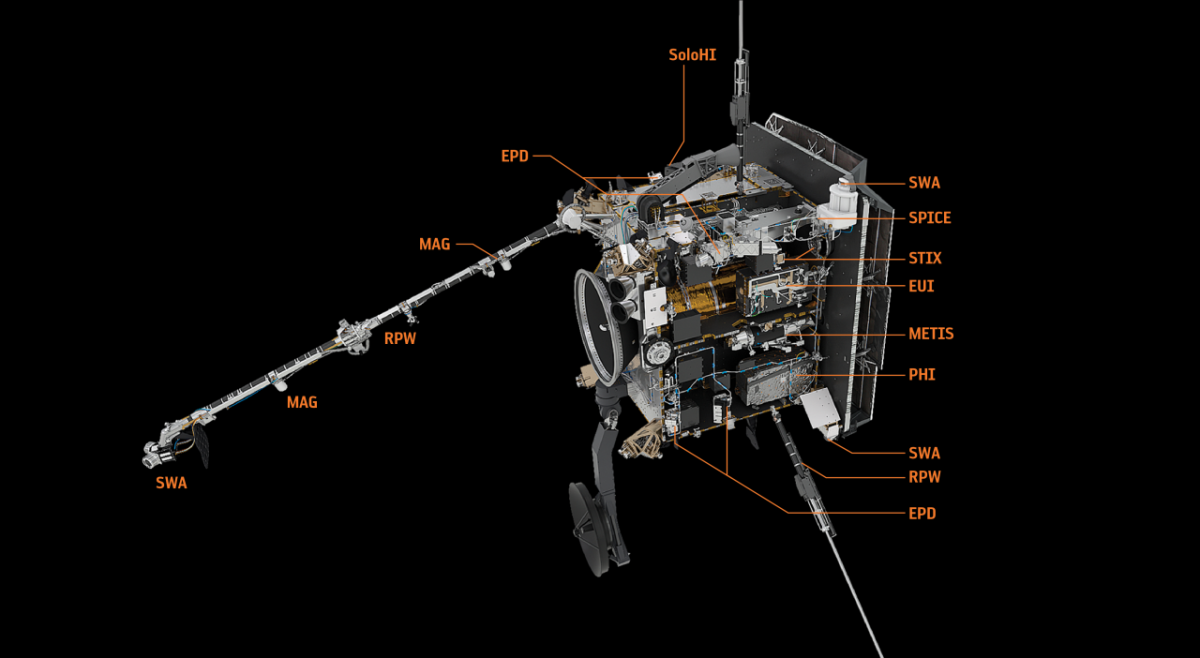Solar Orbiter is a European Space Agency mission which goal is the understanding of the connection between the Sun’s atmosphere and the inner heliosphere. Its scientific core question is "How does the Sun create and control the heliosphere". Thanks to its mission trajectory, Solar Orbiter will provide close-up, high resolution studies of our host star, aiming at answering a variety of science questions (a description of the science objectives can be found on the official document repository: click here).

PAYLOAD
The science payload comprises 10 instruments, 6 remote sensing (they will observe the Sun and its dynamics remotely with a variety of different technologies) and 4 in situ instruments (they will observe the properties of the stream of particles and magnetic field emanating from the Sun). This exciting combination of instruments will provide a better understanding of the link between the dynamic Sun and its influence in its neighbourhood.

The list of remote-sensing instruments is as follows:
-
SPICE: The Spectral Imaging of the Coronal Environment instrument will perform extreme ultraviolet imaging spectroscopy to remotely characterize plasma properties of the Sun's on-disc corona. This will enable matching in-situ composition signatures of solar wind streams to their source regions on the Sun's surface.
- EUI: The Extreme Ultraviolet Imager will provide images of the solar atmospheric layers above the photosphere. EUI will also provide the first-ever UV images of the Sun from an out-of-ecliptic viewpoint.
The EUI website can be found here.
- METIS: This coronagraph, which provides artificial eclipses of the Sun, will simultaneously image the visible, ultraviolet and extreme ultraviolet emission of the solar corona and diagnose, with unprecedented temporal coverage and spatial resolution, the structure and dynamics of the full corona.
The METIS website can be found here.
- PHI: The Polarimetric and Helioseismic Imager will provide high-resolution and full-disc measurements of the photospheric vector magnetic field and line-of-sight (LOS) velocity as well as the continuum intensity in the visible wavelength range. This will permit detailed helioseismic investigations of the solar interior, in particular of the solar convection zone.
- SoloHI: The Heliospheric Imager will image both the quasi-steady flow and transient disturbances in the solar wind over a wide field of view by observing visible sunlight scattered by solar wind electrons.
- STIX: The X-ray Spectrometer/Telescope will provide imaging spectroscopy of solar thermal and non-thermal X-ray emission, allowing the characterisation of high temperature thermal plasmas, mostly associated with flares and/or microflares.
The list of in-situ instruments is as follows:
- EPD: The Energetic Particle Detector will measure the composition, timing and distribution functions of suprathermal and energetic particles.
- MAG: The Magnetometer will provide in situ measurements of the heliospheric magnetic field with high precision.
- RPW: The Radio and Plasma Waves experiment will provide both in situ and remote-sensing measurement of magnetic and electric fields at high time resolution using a number of sensors/antennas, to determine the characteristics of electromagnetic and electrostatic waves in the solar wind.
- SWA: The Solar Wind Plasma Analyser is a suite of sensors that will measure the ion and electron bulk properties (including, density, velocity, and temperature) of the solar wind, thereby characterising the solar wind between 0.28 and 1.4 AU from the Sun.

